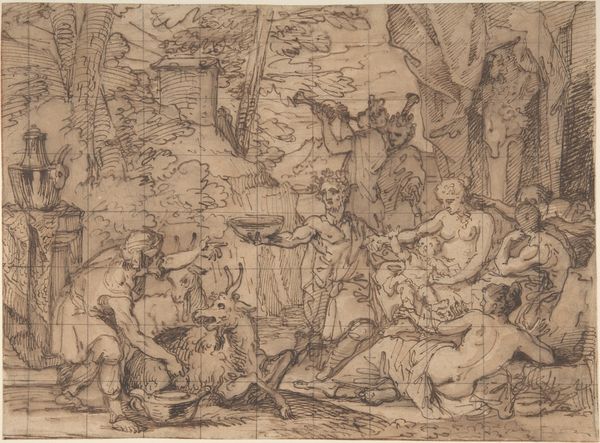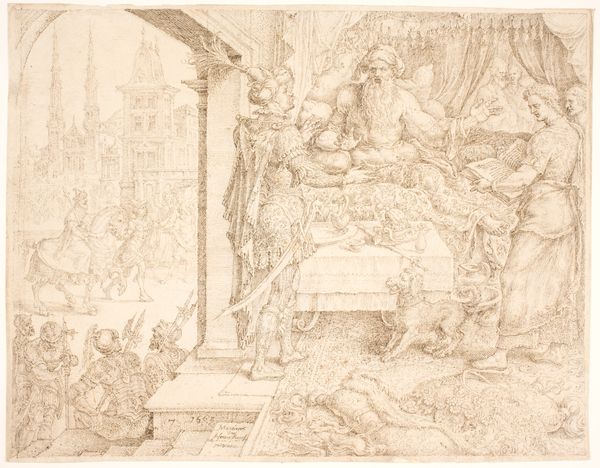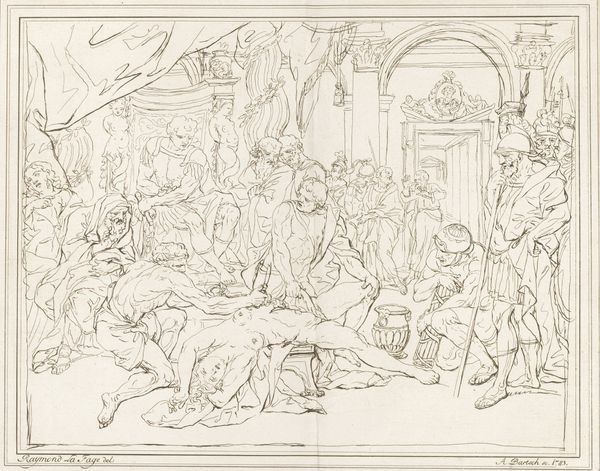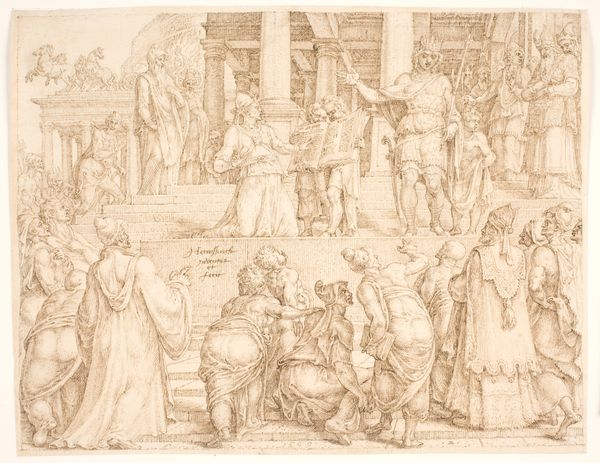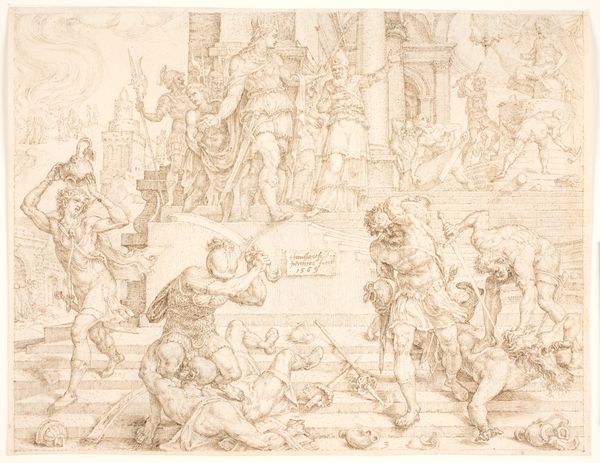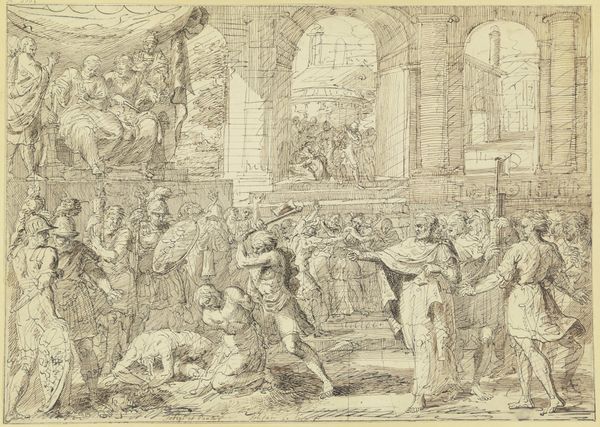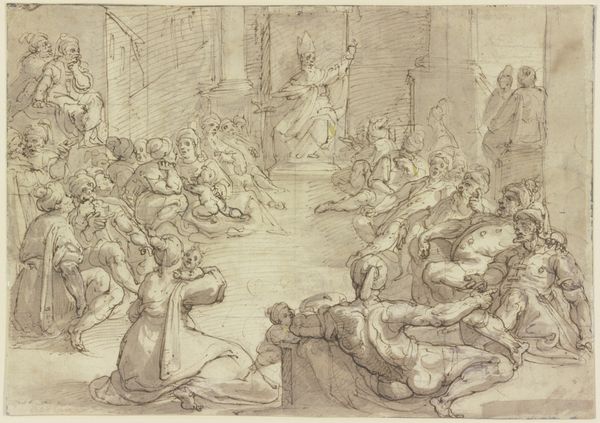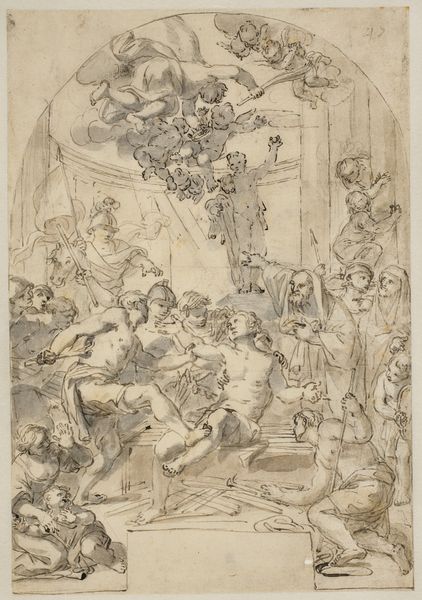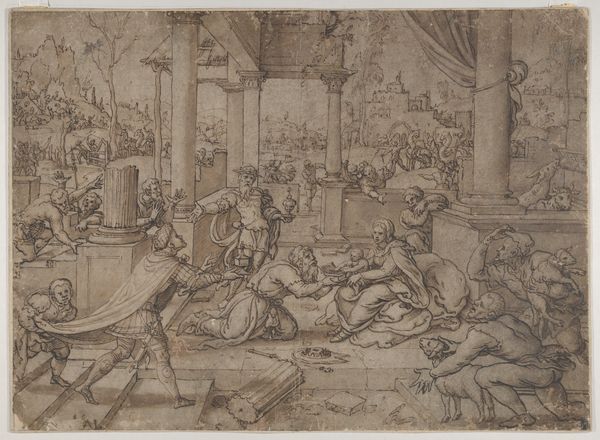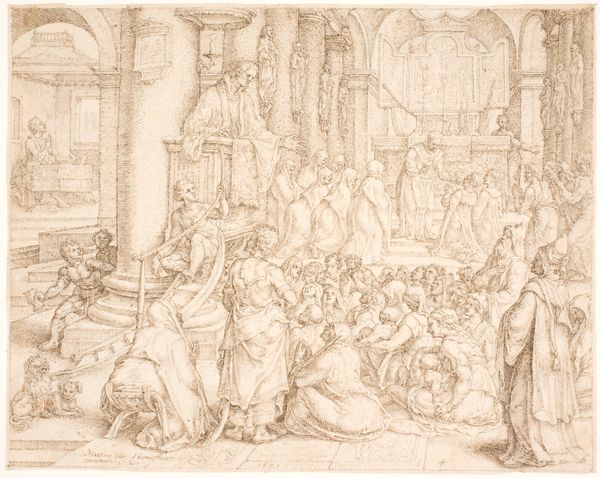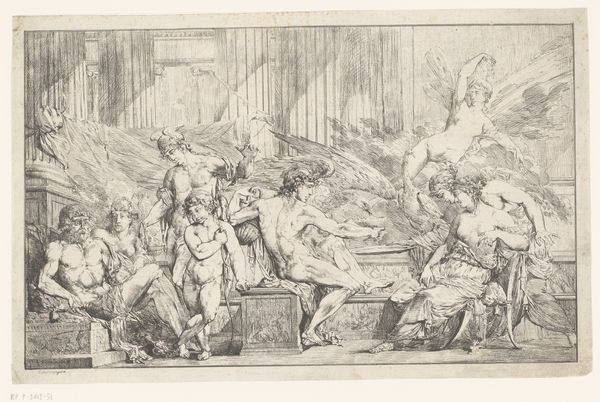
drawing, print, paper, ink, pen, engraving
#
drawing
#
ink drawing
# print
#
pen sketch
#
figuration
#
paper
#
ink
#
pen
#
history-painting
#
italian-renaissance
#
engraving
Dimensions: 178 × 228 mm
Copyright: Public Domain
Curator: This engraving, "Triumph of the Moon" by Monogrammist P.P., created between 1500 and 1510, pulls you in with its sheer density. What stands out to you most? Editor: I’m struck by the almost dreamlike quality. There are so many figures, and the perspective feels skewed. What story do you think it's trying to tell? Curator: That's a keen observation. Its crowded composition is indeed narrating a specific Renaissance-era agenda. Think about the title: "Triumph of the Moon." What does the moon symbolize in historical and social contexts? This piece can be read as an allegory, where the lunar deity often embodies feminine power, intuition, and cyclical change. Editor: So, are you suggesting the artist might be commenting on gender roles through classical allegory? Curator: Exactly! Consider who has power in the piece. Who are the actors, who are the acted upon? Renaissance art often served as a battleground for societal values. We need to look beyond the surface-level aesthetics. Are the female figures empowered, or are they merely objects of display? How does their depiction either subvert or reinforce dominant patriarchal structures? What about the reclining figures? Are they symbols of hedonism, complacency, the masses unaware of injustice? Editor: I hadn’t considered that, I was so focused on the technical aspects of the engraving, but I do see the questions you are bringing up about power dynamics in this context. Curator: Understanding the moon's historical significance and the dynamics within the engraving unlocks the potential for deeper conversations around social commentary, don't you agree? Editor: Absolutely! Now I’m curious about the other symbols in the image, I wonder how much contemporary viewers would understand just from the visual cues of the piece?
Comments
No comments
Be the first to comment and join the conversation on the ultimate creative platform.
